Disclosure: This article contains affiliate links. We may earn a commission from purchases at no extra cost to you, which helps our travel content.
Mumbai's transit system isn't just transportation—it's a living, breathing organism with its own rules, rhythms, and occasional madness. Seven years after my first Ayurvedic healing journey brought me to India, I found myself back in Mumbai last fall, determined to crack the code of this metropolis that moves 22 million people daily. As someone who's navigated Tokyo's precision trains and Los Angeles' sprawling highways, I thought I was prepared. I wasn't. Mumbai's transportation network operates with an organized chaos that initially appears incomprehensible to outsiders but reveals its logic over time. This guide comes from someone who's made every mistake possible—from boarding the wrong train class to overpaying taxis by embarrassing margins—so you don't have to. Whether you're a solo traveler with a week to explore or passing through on business, these insights will help you move through Mumbai efficiently, safely, and without emptying your wallet.
Mumbai's Local Trains: The Backbone and Battleground
Mumbai's suburban rail network is simultaneously the city's lifeline and its greatest challenge for visitors. Over 7.5 million people ride these trains daily—that's nearly the population of Switzerland compressed into metal carriages hurling across the city.
The system is divided into three main lines: Western, Central, and Harbour. Each serves different parts of the sprawling metropolis, with the Western line connecting the tourist and business areas most visitors frequent. First rule: understand the class system. Second class is standard and extremely crowded. First class costs about five times more but provides marginally better conditions. Ladies compartments (marked by green and yellow diagonal stripes) are reserved for women and should be respected.
During my recent trip, I timed a journey from Churchgate to Bandra at rush hour versus mid-day. The difference was 25 minutes versus 35—not because of train speed but because at peak hours, the sheer human momentum carries you in and out of carriages with frightening efficiency.
The ticket system initially confounded me. Skip the long queues and get yourself an ATVM card (Automatic Ticket Vending Machine) or better yet, a Tourist Ticket that allows unlimited travel for 1-3 days. I recommend the travel money belt to keep your tourist ticket and cash secure, as pickpocketing does happen, particularly in crowded stations.
Trains run from approximately 4am until 1am, but frequency varies dramatically. Midday might see trains every 5-7 minutes, while late nights could mean 20-30 minute waits. The Mumbai Rail app saved me countless times with its reasonably accurate timetables.

💡 Pro Tips
- Stand to the left side of the train when arriving at your destination—exits get congested quickly
- Never try to board or exit a moving train—locals make it look easy but accidents are common
- Keep small denominations of cash ready for quick ticket purchases
Auto-Rickshaws: The Three-Wheeled Negotiators
Auto-rickshaws—those three-wheeled, open-air taxis—are Mumbai's answer to the question: "How do we fit a vehicle through that impossibly narrow gap?" These nimble machines dominate the suburban landscape, though they're not permitted in South Mumbai's most central areas.
My detective background has trained me to observe patterns, and here's what I've learned about rickshaw economics: always, always insist on the meter. A functioning meter starts at ₹18 and increments based on distance. If a driver claims the meter is broken, politely decline and find another—there's always another.
The meter system uses a conversion chart that drivers are required to carry. Current rate is approximately ₹21 per kilometer after the initial minimum fare. Drivers might show you a laminated conversion chart; verify it matches the official rates, which are updated periodically.
One evening in Bandra, I needed to reach Juhu during a light rain—typically a scenario where drivers inflate prices. Three drivers quoted ₹150-200 for what should be a ₹70 ride. I simply walked 20 meters to the main road, flagged a passing rickshaw who agreed to use the meter, and paid ₹68 for the exact same journey.
For safety and navigation assistance, I rely on my smartphone mount which attaches securely to the rickshaw's metal frame. This allows me to follow our route on maps without fumbling with my phone or appearing obviously like a tourist checking directions.
Rickshaws operate 24/7 in the suburbs, though finding one late at night might require walking to major roads. They're ideal for distances between 1-7 kilometers—beyond that, trains or taxis become more economical.
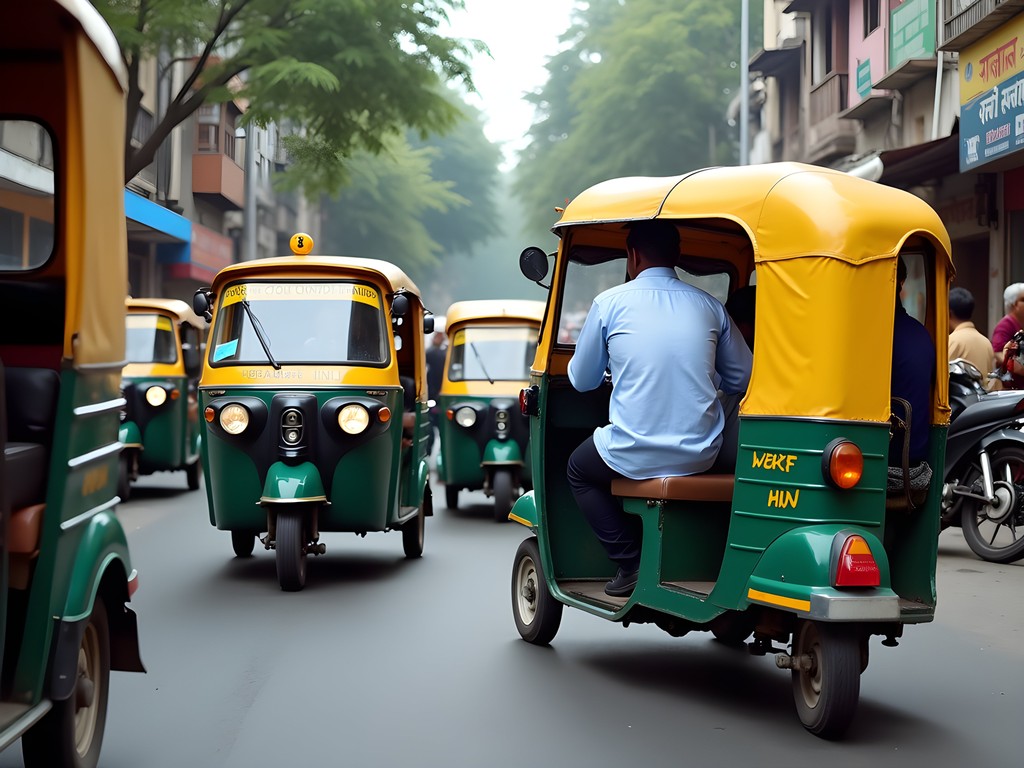
💡 Pro Tips
- Note the rickshaw's registration number before boarding for safety
- Keep Google Maps open to ensure drivers take efficient routes
- Learn the phrase 'meter se chaliye' (go by meter) and use it confidently
The BEST Bus Network: Slow But Scenic
Mumbai's BEST buses (Brihanmumbai Electric Supply and Transport) are the unsung heroes of the city's transportation ecosystem. With over 3,500 buses covering nearly 400 routes, they reach corners of Mumbai that trains simply don't.
During my investigation of sustainable transport options, I spent three days exclusively using BEST buses. The experience was enlightening, if not always efficient. Buses range from ancient models with wooden seats to modern air-conditioned vehicles that wouldn't look out of place in European cities.
The fare structure is distance-based and starts at around ₹5 for non-AC and ₹6 for AC buses. You pay the conductor directly after boarding, so having small bills is essential. The real challenge isn't the payment but identifying which of the hundreds of routes serves your destination.
I discovered the m-Indicator app was invaluable for bus route planning. You input your starting point and destination, and it suggests appropriate bus numbers along with estimated travel times. Be warned: these estimates are optimistic. Mumbai traffic means a 5km journey might take 15 minutes or 50, depending on time of day and the traffic gods' mood.
Buses display their numbers and major destinations on the front and sides. The real skill is knowing where to stand—official bus stops exist, but buses often stop wherever passengers cluster. Learning to recognize these informal stops comes with experience.
For longer bus journeys, my collapsible water bottle proved essential. Mumbai's heat and the sometimes lengthy waits between buses can lead to dehydration, and having a bottle that takes minimal space when empty is perfect for day-long explorations.
The true advantage of buses is the window they provide into Mumbai life. While trains rush through the city, buses crawl through it, offering glimpses into neighborhoods and daily routines tourists rarely see.
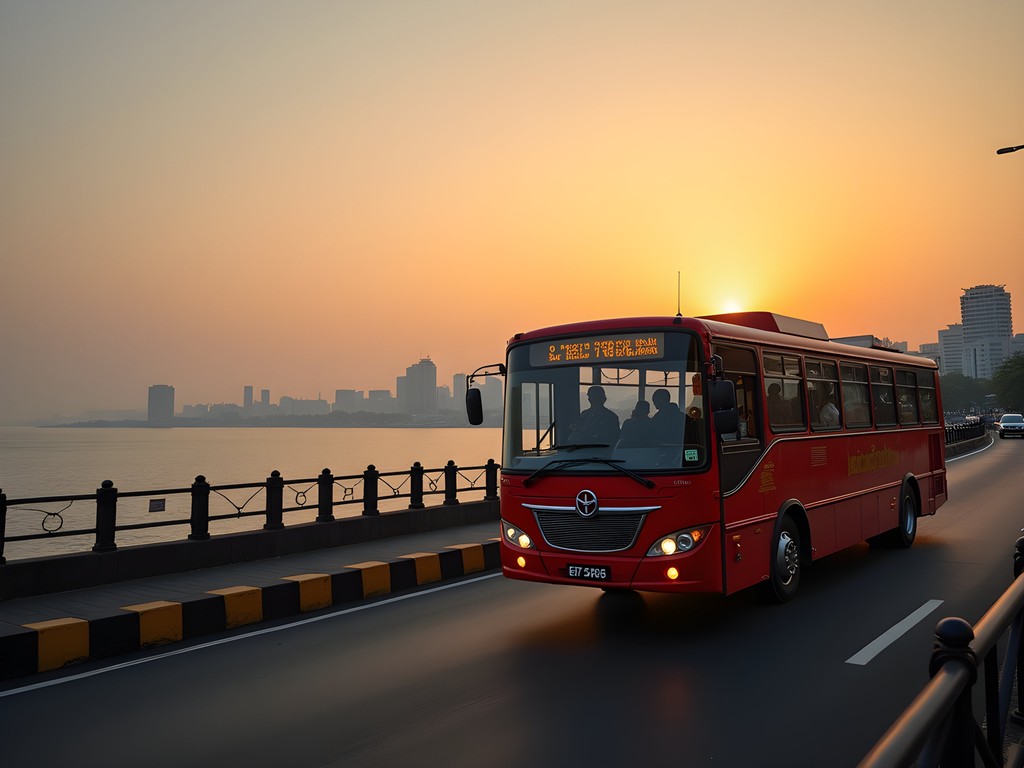
💡 Pro Tips
- Board buses from the front and exit from the rear when possible
- Keep a physical map with major bus routes marked as backup when phone batteries die
- On crowded buses, prepare your fare before boarding to avoid fumbling for money while standing
Taxis: Black-and-Yellow Landmarks
Mumbai's black-and-yellow taxis are as iconic to the city as the Gateway of India. These vintage Fiats (locally called 'kaali-peeli') have transported Mumbaikars for generations, and unlike many cities where traditional taxis are disappearing, they remain competitive with ride-sharing services.
Taxis operate on meters similar to auto-rickshaws, though with different rate cards. The current minimum fare is ₹25, and like rickshaws, drivers should use a conversion chart to calculate the final fare. South Mumbai—where rickshaws aren't permitted—is taxi territory, and you'll find them queued at major hotels, stations, and tourist spots.
My detective instincts for pattern recognition helped me notice something: taxis near five-star hotels or tourist attractions often refuse to use meters, quoting flat rates 3-4 times the actual fare. Walk just 100 meters away, and suddenly meters work perfectly. This isn't coincidence—it's a deliberate targeting of tourists.
For airport transfers or when carrying luggage, I found pre-booking through services like Meru or TabCab provides peace of mind with fixed rates, air conditioning, and more spacious vehicles. For late-night travel, these services offer an extra layer of security and reliability.
One unique aspect of Mumbai taxis is the 'sharing' system on popular routes. At major stations like Dadar or Bandra, taxis line up for specific destinations and take multiple passengers, each paying a portion of the fare. It's economical but requires knowing the system and being comfortable sharing with strangers.
For keeping track of taxi expenses and splitting fares when traveling with friends, I use the expense tracker app which has saved me countless headaches when reconciling group travel costs.
The most important taxi tip I can offer: always note the vehicle number (displayed on the sides and rear) before entering. This simple precaution, ingrained from my law enforcement background, provides accountability and is essential for retrieving items left behind.

💡 Pro Tips
- Taxis are required to accept any destination within the Mumbai Metropolitan Region—if refused, note the taxi number and report it
- Keep the Mumbai traffic police helpline (8454999999) saved in your phone for emergencies or complaints
- For early morning airport departures, book a taxi the previous evening as availability becomes limited after midnight
Sustainable Alternatives: Walking and Emerging Options
Mumbai presents a paradox for sustainable travel enthusiasts. While its public transportation moves millions with relatively low carbon footprints, the infrastructure for cycling and walking ranges from challenging to nonexistent. Nevertheless, exploring certain neighborhoods on foot reveals layers of the city invisible from vehicles.
During my week in Mumbai, I dedicated mornings to walking explorations before the heat and traffic intensity peaked. South Mumbai areas like Colaba, Fort, and Marine Drive offer relatively pedestrian-friendly experiences with colonial architecture, sea breezes, and numerous stopping points. I tracked over 15,000 steps daily using my fitness tracker which also helped monitor my exertion levels in Mumbai's heat and humidity.
Bandra and Khar in the western suburbs also reward walkers with tree-lined streets, street art, and distinctive bungalows. However, walking in most other areas requires vigilance—sidewalks appear and disappear without warning, and pedestrian crossings are often theoretical concepts rather than actual safe passages.
Cycling infrastructure remains in its infancy, though advocacy groups are making progress. The MYBYK bicycle sharing system has stations in Bandra Kurla Complex (BKC) and is slowly expanding. As someone who's documented bike-sharing programs globally, I see Mumbai's nascent system as promising but currently limited to recreational use rather than practical transportation.
Mumbai's coastal geography offers one unique sustainable option: the ferry services. The routes between Versova-Madh and the more extensive services from Gateway of India provide scenic alternatives to road congestion. During my visit, I used the newly expanded water taxi service from Domestic Cruise Terminal to Mandwa, cutting a 3-hour land journey to just 30 minutes.
The most sustainable approach I've found combines modes: trains for long distances, walking for exploration, and taxis or rickshaws only when necessary. This mixed-mode approach not only reduces environmental impact but provides the most authentic experience of Mumbai's transportation culture.
For those with mobility challenges, Mumbai presents significant obstacles. Most stations lack elevators, buses have high steps, and sidewalks—where they exist—are rarely accessible. Advanced planning and possibly arranging private transportation may be necessary.

💡 Pro Tips
- Walk early mornings (6-8am) when temperatures and traffic are most manageable
- Download offline maps of neighborhoods you plan to explore on foot
- On ferries, arrive 30 minutes before departure as ticketing can be slow and confusing for first-timers
Digital Navigation Tools: Apps That Saved My Journey
The complexity of Mumbai's transportation system would be nearly impenetrable without modern technology. As someone who's investigated complex systems professionally, I approached Mumbai's transit network methodically, testing multiple apps to find the optimal digital toolkit.
The undisputed essential is m-Indicator, developed specifically for Mumbai's transportation network. This locally-developed app provides timetables for trains, buses, and metros, fare calculators, platform indicators, and even auto/taxi fare cards. While the interface isn't slick, its comprehensive data has saved me countless hours of confusion. The offline functionality is particularly valuable when network connectivity becomes spotty in crowded stations.
For real-time traffic conditions and alternative routing, Google Maps remains valuable but with caveats. Its time estimates for Mumbai are consistently optimistic—I've found adding 30-40% to any Google estimate provides a more realistic expectation. The app struggles with temporary road closures, religious processions, and the spontaneous traffic patterns that characterize Mumbai.
Uber and Ola (India's local equivalent) operate extensively throughout Mumbai. While slightly more expensive than traditional taxis or auto-rickshaws, they eliminate haggling and provide air conditioning—a significant comfort during monsoon or summer months. I've found Ola's interface better adapted to local conditions, while Uber's trip-sharing feature makes it economical for airport transfers.
For train journeys, the official UTS (Unreserved Ticketing System) app allows mobile ticket purchases, avoiding the often lengthy queues at station counters. The learning curve is steep—verification processes and a clunky interface challenge even tech-savvy users—but the convenience justifies the initial setup time.
Keeping these apps functioning requires power. My portable charger proved indispensable during long days of transit hopping. With Mumbai's heat draining phone batteries faster than usual and navigation apps consuming power continuously, carrying substantial backup power is non-negotiable.
One unexpected digital tool I found valuable was the Mumbai Transit Map by Urban Mapping Project—an offline visual representation of the entire train network that proved invaluable when planning complex journeys or when battery conservation became necessary.
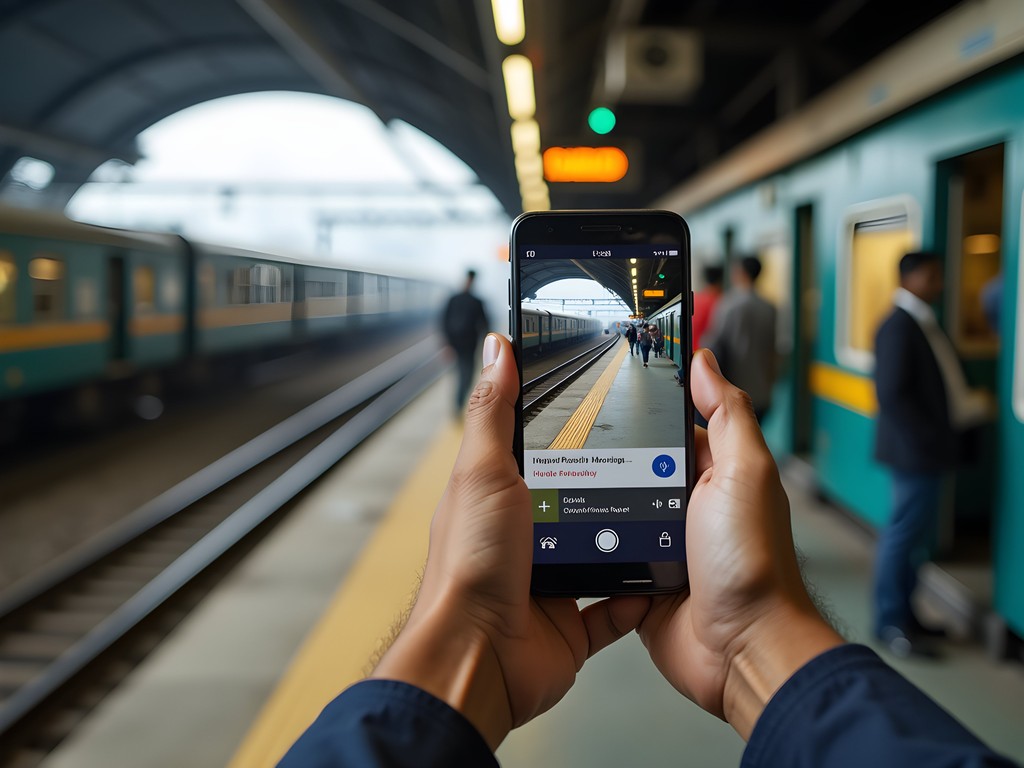
💡 Pro Tips
- Download and set up all transit apps before arriving in Mumbai
- Screenshot important directions, tickets, and confirmation numbers in case of connectivity issues
- Enable offline maps for critical areas like your accommodation neighborhood and major transit hubs
Final Thoughts
Mumbai's transportation system initially appears as a chaotic puzzle, but after a week of methodical exploration, patterns emerge and the logic becomes clear. The city rewards those who approach its transit options with flexibility, patience, and a willingness to learn through trial and error. I found that combining multiple modes—trains for distance, walking for discovery, and auto-rickshaws for those in-between journeys—created the most efficient and authentic experience. While Mumbai's transit infrastructure faces enormous challenges, there's an admirable efficiency in how it moves millions daily through limited space. The system taught me something valuable: sometimes what appears as chaos from the outside is actually a complex order that requires participation to understand. Whether you're visiting Mumbai for Ayurvedic healing as I first did, or exploring its dynamic urban landscape, mastering its transportation is both a necessity and an education. Your journey through Mumbai's streets and rails will likely become as memorable as any destination you visit in this remarkable city.
✨ Key Takeaways
- Trains offer the fastest transit during rush hour despite crowding
- Auto-rickshaws should always use meters—walk away if they refuse
- Digital apps like m-Indicator are essential but require backup power
- Early morning offers the best conditions for walking exploration
📋 Practical Information
Best Time to Visit
October to February (post-monsoon, pre-summer heat)
Budget Estimate
₹200-500 per day for transportation
Recommended Duration
Minimum 5-7 days to understand the system
Difficulty Level
Challenging

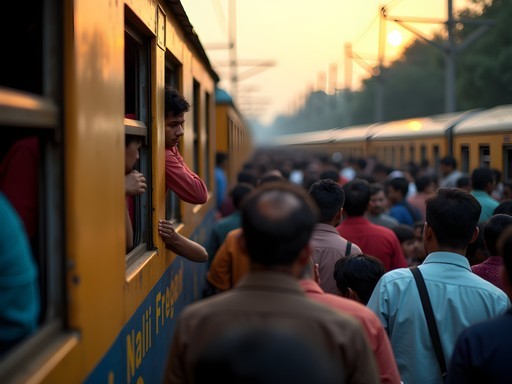


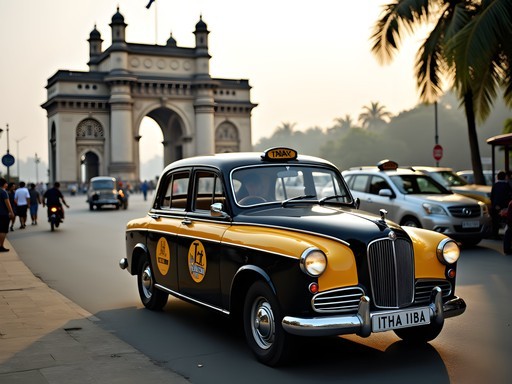




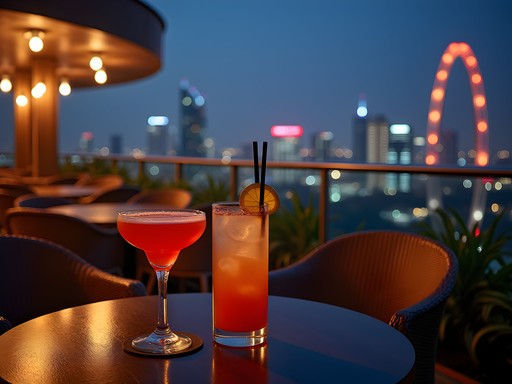
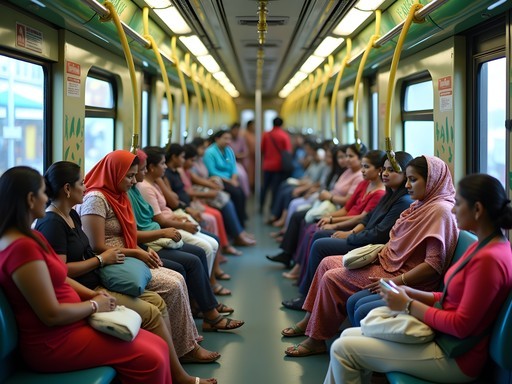
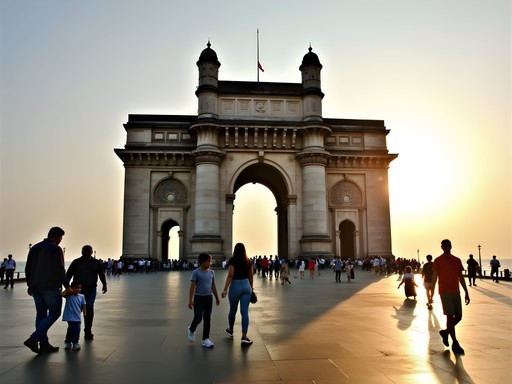
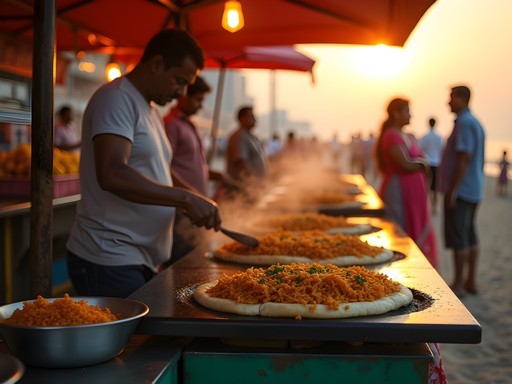
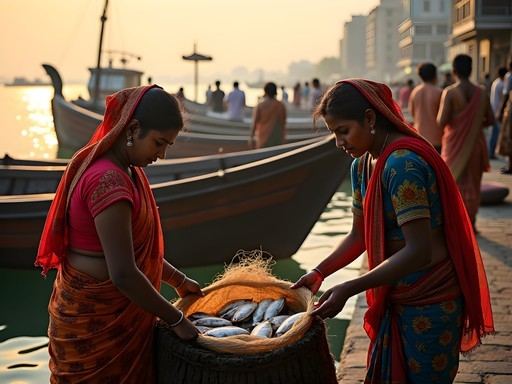
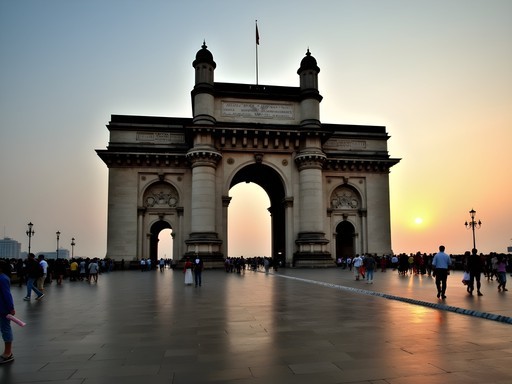


Comments
backpacknomad
That shot of the packed train doorway is exactly how I remember it. Brings back the adrenaline rush just looking at it!
sunnychamp
Pro tip: when taking rickshaws, always agree on price before getting in!
Hannah Woods
Jordan, this is spot-on accurate! After spending 3 weeks navigating Mumbai last year, I'd add a few observations: For women travelers, the ladies compartment isn't just more comfortable - it's essential during peak hours. I found the BEST buses more reliable than you described, especially routes 1-100 which connect major landmarks. For anyone staying longer than a few days, consider getting a prepaid SIM with data and using Uber/Ola instead of negotiating with taxi drivers constantly. I tracked my spending and it was actually cheaper overall, plus the Lonely Planet Mumbai has a fantastic pull-out map with all the major bus/train routes marked that I referenced constantly.
backpacknomad
Good call on Uber/Ola! Saved me from so many haggling sessions, especially late at night.
coffeeexplorer
Those train photos are giving me anxiety just looking at them! 😱
islandlover
Going to Mumbai next month for the first time! Kind of nervous about the trains after reading this. Is it really that intense? Any other tips for a first-timer?
Savannah Torres
Don't worry too much! My family (including two kids) managed just fine. The key is timing - we avoided rush hours completely (7-10am and 5-8pm). For first-timers, I'd recommend starting with the Western Line on a Sunday when it's quieter to get comfortable with the system. Also, keep some small bills handy for auto-rickshaws, they rarely have change. And yes, definitely get the m-Indicator app as backpacknomad mentioned!
islandlover
Thanks so much! Downloading that app right now. Sunday sounds like a good plan to start!
backpacknomad
This brought back so many memories! Those Mumbai local trains are no joke - I still remember hanging onto the doorway for dear life during rush hour. Jordan's tip about avoiding peak times saved me after my first traumatic experience. The ladies compartment was a godsend for my girlfriend. One thing I'd add is to download the m-Indicator app - absolute lifesaver for train schedules and platforms. Anyone else brave enough to try standing in the doorway while the train was moving? 😂
sunnychamp
Oh god no! I stayed firmly inside the train. Too scary for me!
backpacknomad
Haha probably the smarter choice! The locals made it look so easy though...
starqueen
Those black and yellow taxis are so iconic! Got some amazing photos with them as backdrop near Gateway of India!
Douglas Bradley
Jordan, excellent breakdown of Mumbai's transit ecosystem. Having spent three months documenting transportation systems across South Asia last year, I found Mumbai's to be the most efficient despite appearing chaotic to outsiders. One tip I'd add: the Central and Western railway lines have distinctly different vibes and crowding patterns. The Harbour line tends to be slightly less packed and worth considering for tourists making their first attempt. Also, the new metro lines are gradually changing the transit landscape - much more comfortable but less of the authentic Mumbai experience you've captured so well here.
Jordan Freeman
Great insights about the different railway lines, Douglas! You're absolutely right about the metro too - it's becoming a game-changer for certain routes. The air conditioning alone makes it worth the extra cost on hot days.
redway
Just got back from Mumbai and your guide was super helpful! One thing I'd add - the prepaid taxi counters at the airport are worth the small extra charge to avoid haggling after a long flight. Also, the Kaali Peeli taxis (black and yellows) rarely want to use meters in touristy areas, but if you walk a block away from major attractions, you'll have better luck getting an honest fare.
Jordan Freeman
Great tip about walking a block away from tourist spots! That's exactly the kind of local knowledge that makes travel smoother.
tripchamp
Just got back from Mumbai and followed your advice about the trains. Traveling mid-morning was SO much better than rush hour! One thing to add - if you're taking the train from the airport into the city, there's a prepaid taxi booth inside the terminal that's actually fair and prevents getting scammed. They'll give you a receipt with the exact fare so drivers can't add random charges. Wish I'd known that before getting ripped off on arrival!
Venture X
Premium card with 2X miles, $300 travel credit, Priority Pass